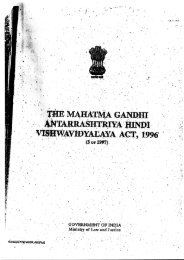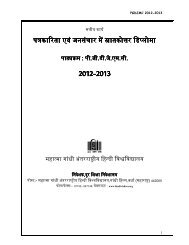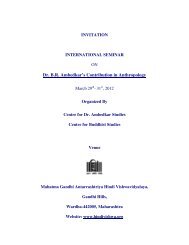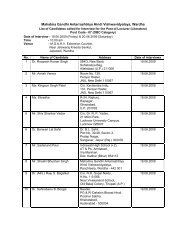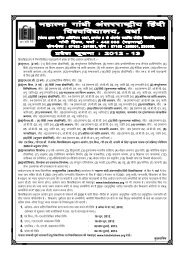Mamta Kalia
Mamta Kalia
Mamta Kalia
Create successful ePaper yourself
Turn your PDF publications into a flip-book with our unique Google optimized e-Paper software.
(MICG) was assigned the task of<br />
enforcement. Henceforth, no films or<br />
videos could be screened without a<br />
permit. The government also imposed<br />
a ban on all films and videos which:<br />
Weaken the principle of monotheism and<br />
other Islamic principles; insult directly or<br />
indirectly, the Prophets, Imams, the<br />
guardianship of Supreme Jurisprudent…<br />
blaspheme against the values and personalities<br />
held sacred by Islam and other religions<br />
mentioned in the Constitution; encourage<br />
wickedness, corruption and prostitution;<br />
encourage or teach dangerous addictions<br />
and earning a living from unsavoury means<br />
such as smuggling; negate the equality of<br />
people regardless of colour, race, language,<br />
ethnicity and belief; encourage foreign cultural,<br />
economic and political influence contrary to<br />
the ‘neither West nor East’ policy of the<br />
government…show details of scenes of<br />
violence and torture, misrepresent<br />
geographical and historical facts… 11<br />
The most important of these dealt<br />
with the way Iranian women were to<br />
be projected on the screen. For example,<br />
it would be mandatory for women to<br />
wear the hijab in all conditions; there<br />
could be no physical contact between<br />
men and women (not even between<br />
mother and son); all women were to<br />
be filmed in long shot, plots that had<br />
central women characters were to be<br />
avoided. 12<br />
But there was also a flip side to the<br />
regime of restrictions and controls.<br />
Khatami who took over as the Minister<br />
of Culture and Islamic guidance, was<br />
among the few to realize that bringing<br />
art under complete purview of the<br />
132 :: April-June 2010<br />
government would be inimical to the<br />
long term interests of the Islamic state.<br />
He therefore created the Farabi Cinema<br />
Foundation (FCF), with Mohammed<br />
Beheshti at its helm in 1983, to provide<br />
general direction to the film industry<br />
and regulate the import and export of<br />
films. Later, the FCF also began coproduction<br />
of films. Another organization<br />
created during the period of the<br />
revolution was the Foundation of the<br />
Oppressed (Bonyad-e Mostaza’fan)<br />
created by Khomeini in 1979. Producing<br />
seven films a year in the 1980s, the<br />
Foundation of the Oppressed became<br />
associated with some of the top directors<br />
of the Iranian film industry such as<br />
Daryush Farhang, Rakshan Bani-Etemad<br />
and Mohsen Makhmalbaf. Makhmalbaf’s<br />
Cyclist (1989) and The Wedding of the<br />
Blessed (1989), were produced by the<br />
Foundation. Another institution was<br />
the Arts Centre (Howzeh-ye Honari)<br />
of the Islamic Propaganda Organization<br />
that produced war and propaganda films.<br />
Makhmalbaf’s early films including<br />
Justification (1981), Nasuh’s Repentance<br />
(1982), Two Sightless Eyes (1983) and<br />
Boycott (1985), were all produced by<br />
the Centre. With the increasing popularity<br />
of Iranian films among European and<br />
North American audiences, several films<br />
have been co-produced by companies<br />
owned by foreigners or by the Iranian<br />
diaspora.<br />
Khatami also encouraged the growth<br />
of New Wave films by exempting many<br />
filmmakers from the onerous procedure




